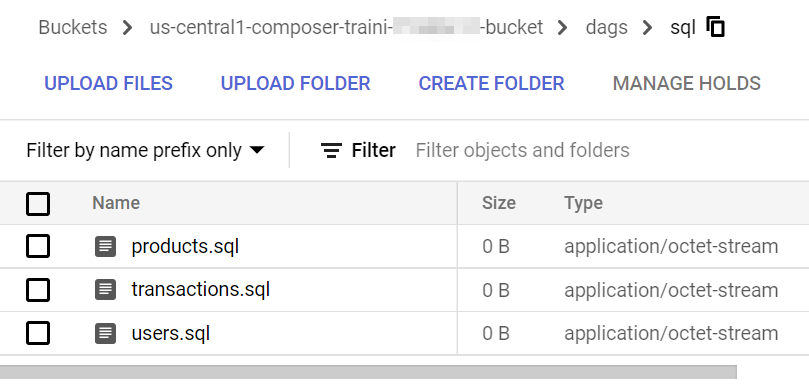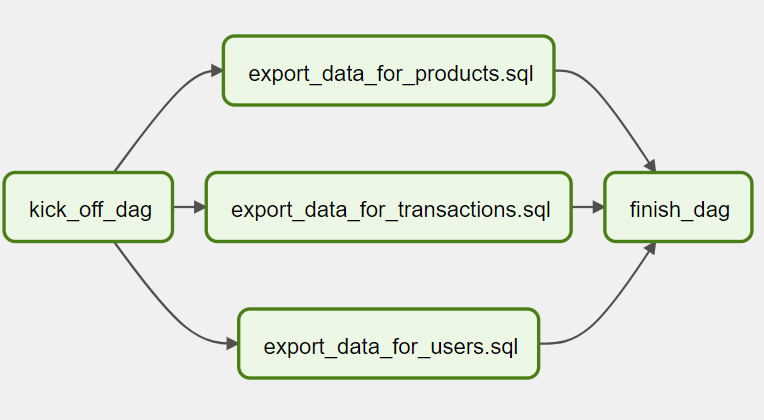Dynamic tasks DAG
As mentioned before, in Airflow, a DAG is defined by Python code. There is no need for it to be purely declarative; you are free to use loops, functions, and more to define your DAG.
For example, let's say that there is a requirement to create a data pipeline to export data from tables in a database. Since new tables can be added at any time, the number of tables that we need to export data from is dynamic.
Firstly, we save and upload a few SQL queries in the Cloud Storage bucket.

Then, we can create a DAG that uses a for loop to define some tasks. In this example, DummyOperator is used for demonstration purpose. As per name, DummyOperator does nothing. The tasks that use it are evaluated by the scheduler but never processed by the executor.
Create a file named 4_dynamic_dag.py that contains the following code:
from datetime import datetime
from airflow import DAG
from airflow.operators.dummy_operator import DummyOperator
import os
sql_folder = os.path.abspath(os.path.join(os.path.dirname(__file__), "sql"))
sql_file_names = []
for file in os.listdir(sql_folder):
if file.endswith(".sql"):
sql_file_names.append(file)
with DAG(
"4_dynamic_dag",
description="my dynamic DAG",
schedule_interval="0 12 * * *",
template_searchpath=sql_folder,
start_date=datetime(2021, 12, 1),
catchup=False,
tags=["custom"],
) as dag:
d1 = DummyOperator(task_id="kick_off_dag")
d3 = DummyOperator(task_id="finish_dag")
for i in sql_file_names:
d2 = DummyOperator(task_id=f"export_data_for_{i}")
d1 >> d2 >> d3

Dynamic DAGs are useful. However, try and keep the topology (the layout) of the DAG tasks relatively stable; dynamic DAGs are usually better used for dynamically loading configuration options or changing operator options.
Remember that readability is also important in designing Airflow DAGs.
Next, let's create a DAG to handle branching tasks.